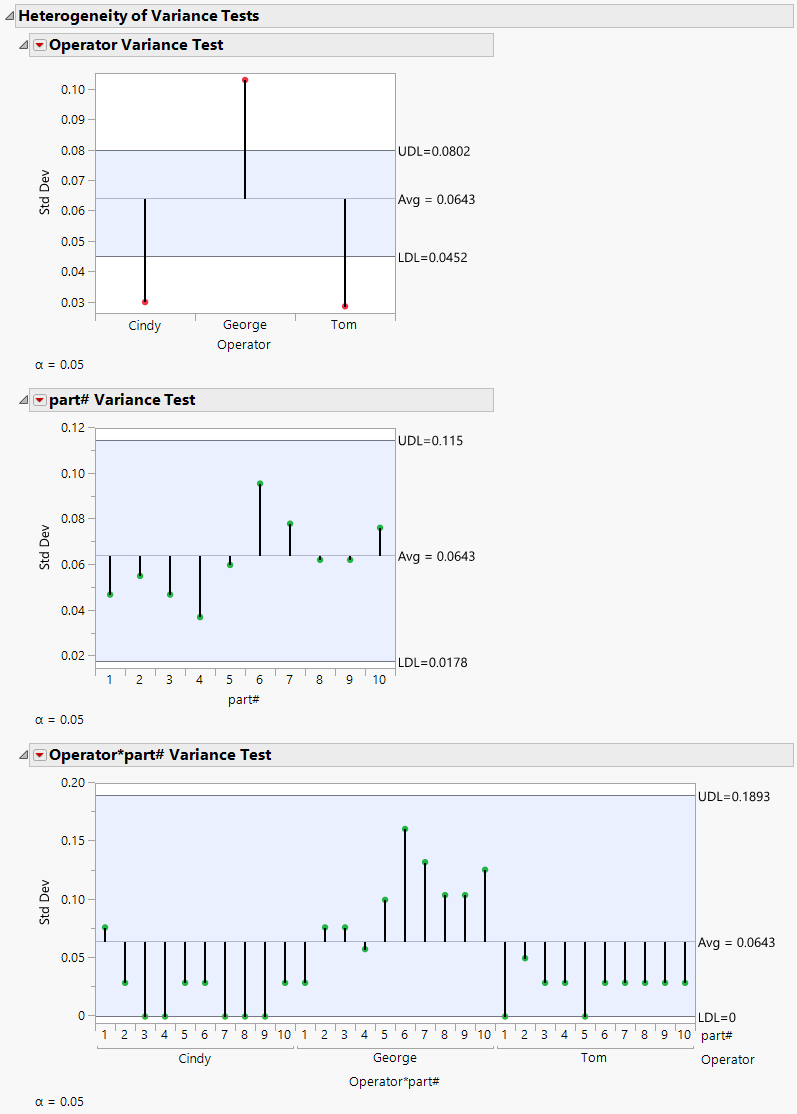Example of the Heterogeneity of Variance Test
Use the Variability Chart platform to test if the variances of different groups are statistically different. In this example, three operators each took three measurements of ten parts, for a total of 90 observations. You want to examine the following:
• whether the variance of measurements for each operator are the same or different
• whether the variance for each part is the same or different
• whether the variance for each Operator*part combination is the same or different
1. Select Help > Sample Data Folder and open Variability Data/2 Factors Crossed.jmp.
2. Select Analyze > Quality and Process > Variability / Attribute Gauge Chart.
3. Select Measurement and click Y, Response.
4. Select Operator and click X, Grouping.
5. Select part# and click Part, Sample ID.
6. (Optional) Enter 1234 next to Set Random Seed.
7. Click OK.
8. Click the Variability Gauge Analysis for Measurement red triangle and select Heterogeneity of Variance Tests.
9. Select Crossed.
10. Click OK.
Figure 6.10 Heterogeneity of Variances Tests Report
In the Operator Variance test, all of the levels exceed the decision limits. In the part# Variance test, none of the levels exceed the decision limits. These plots are in terms of standard deviations. From this, you conclude that the operator standard deviations differ from the average corresponding group standard deviation, but the part standard deviations do not. The operators have difference variances compared to the other operators, but each part has a similar variance to the other parts.
For the interaction (Operator*part#) Variance test, there are a few combinations that have standard deviations that fall on the decision limits. While most of the Operator*part# combinations have similar variances to the other Operator*part# combinations, you might want to examine the combinations that are near the decision limits.
